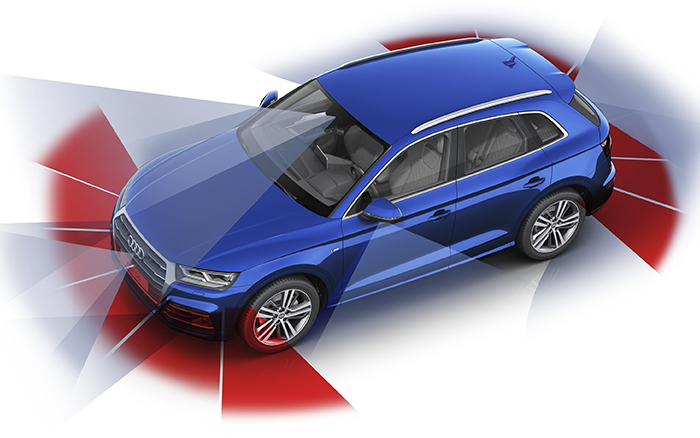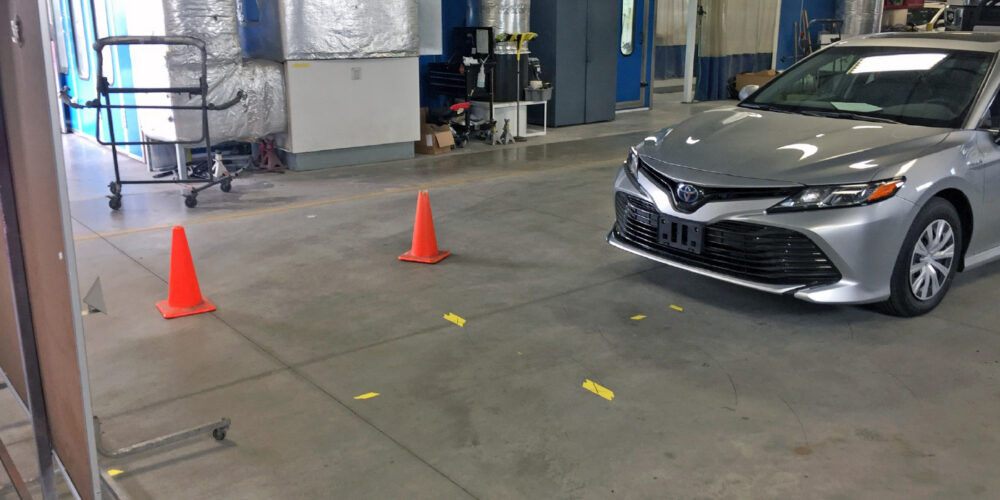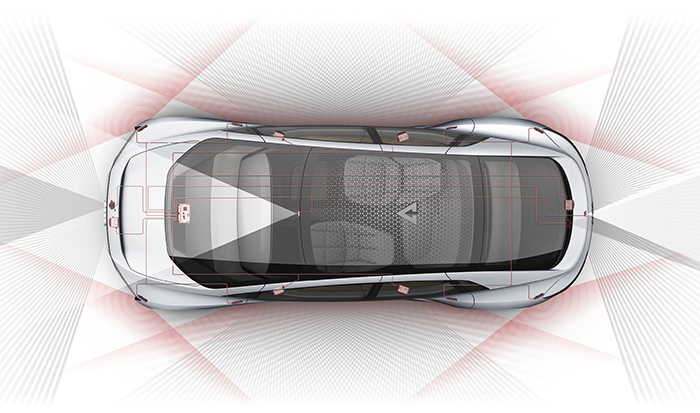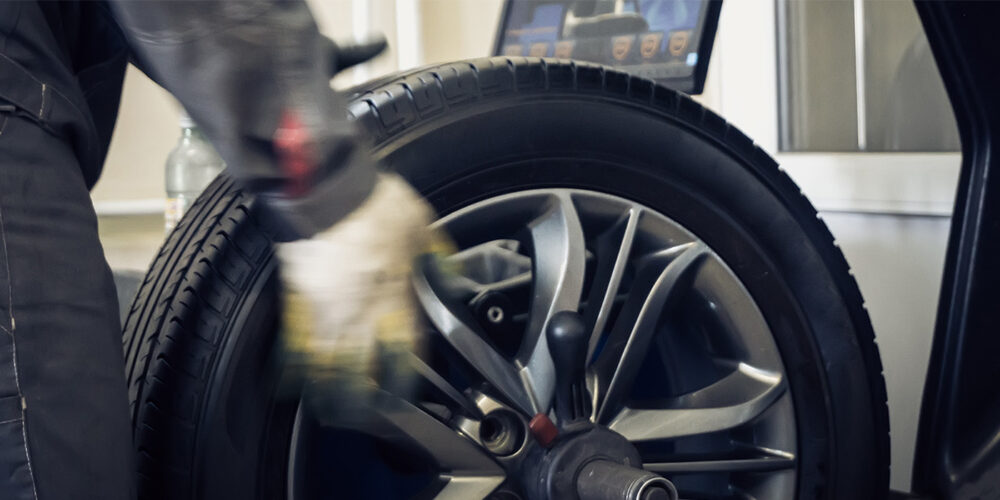Vehicle crashes are measured in inches and not by the plus or minus tolerances of a vehicle’s specifications. For an ADAS system to operate to its full potential, it must be calibrated with the greatest accuracy possible. If the sensors are misaligned, the farther the vehicle looks down the road, the greater the inaccuracy. This can impact all ADAS functions, such as AEB, Lane Keeping and Blind Spot Monitoring.
For example, most long-range radar sensors can look down the road more than two and a half football fields. So, if the radar sensor is turned just a small amount by a bumper impact or a misaligned thrust angle, it will look at the side of the road, not the center. Sure, the medium-range radar might pick up and classify the obstruction or vehicle when it is within 65 feet. But, at this point, the radar has only one second to correct if the vehicle is traveling at 50 mph. This is why accuracy is important for more sophisticated ADAS systems.
What is a calibration procedure?
There are two types of calibration procedures, static and dynamic. A static calibration is performed with the vehicle parked in a shop. A dynamic calibration is performed with the vehicle moving.
During a static calibration, the procedure involves using a target with a specific pattern, shape or even thickness. The target is set at a specific distance, angle and orientation from a measured point on the vehicle. The vehicle knows what the target or fixture should look or sound like because it was programmed into the system at the factory. The scan tool activates this memory, so it can compare and adjust.
A dynamic calibration procedure involves driving the vehicle in a learning mode initiated with a scan tool. As the vehicle is driven, the sensors analyze the inputs from the different sensors for calibration. This involves the ADAS control module cross-referencing radar, camera and vehicle dynamic inputs.
Proven Accuracy
With some ADAS-equipped vehicles, it is easy to find the ADAS calibration procedures in the service information. As long as your scan tool has the software and basic tools like a plum bob, string and measuring tape, you might be able to calibrate the ADAS sensors. You might also need a decent printer to make targets.
The problem with these calibration procedures is they are made for low-mileage vehicles. Many measurement points used to square the vehicle to the target are emblems, license plates and bumper mounts. If you are dealing with an older vehicle, these points might not be in optimal condition. Also, some tools like a string, plum bob or printed targets are not precision tools. Achieving a tolerance of ±3-5mm is difficult, to say the least.
Your next option is to use an ADAS fixture. These tools typically square the vehicle using the wheels. The wheel targets resemble camera targets used for alignments. By using the wheels, the alignment of the vehicle is far more accurate than the points on the body.
Some systems can even use targets on all four wheels to verify alignment angles like toe and thrust. In addition, some systems can look for issues with ride height using the targets.
Once the fixture is squared to the vehicle, the technician can install the target at the proper distance from the camera, radar or lidar sensors. The target and setup has to be very precise.
As discussed before, buried deep in the software of the ADAS system is what the optimal setup should look like to the camera or sound like in the case of radar. The “perfect” results are then used to calibrate the sensors using internal electronic adjustments or external mechanical adjustments. If the target is misaligned or not squared to the vehicle, the procedure might abort or not accurately calibrate the sensors. This can lead to deactivated ADAS features or false activations of the ADAS system.

Most fixtures are designed to work with a proprietary scan tool. Unlike some OEM procedures, the software can walk a technician through the setup process and confirm the targets are set up properly for the vehicle before the calibration begins.
But, an ADAS calibration scan tool and fixture do not get you off the hook for a basic vehicle inspection. Before you start, inspect the sensors and other vehicle systems.
I am not just talking about alignment angles, sensor mounts and ride height. Special attention needs to be paid to other modules on the vehicle to ensure that every system is active and communicating. This is why scanning all the modules is critical for fast and accurate calibration. If the modules have communication or low-voltage codes, those need to be resolved before calibration.
The most common item missed by technicians is the battery. If the battery cannot sustain 12 volts or more during the calibration procedure, it will abort when the voltage drops. Some OEMs may recommend that a power supply be used during calibration.

















